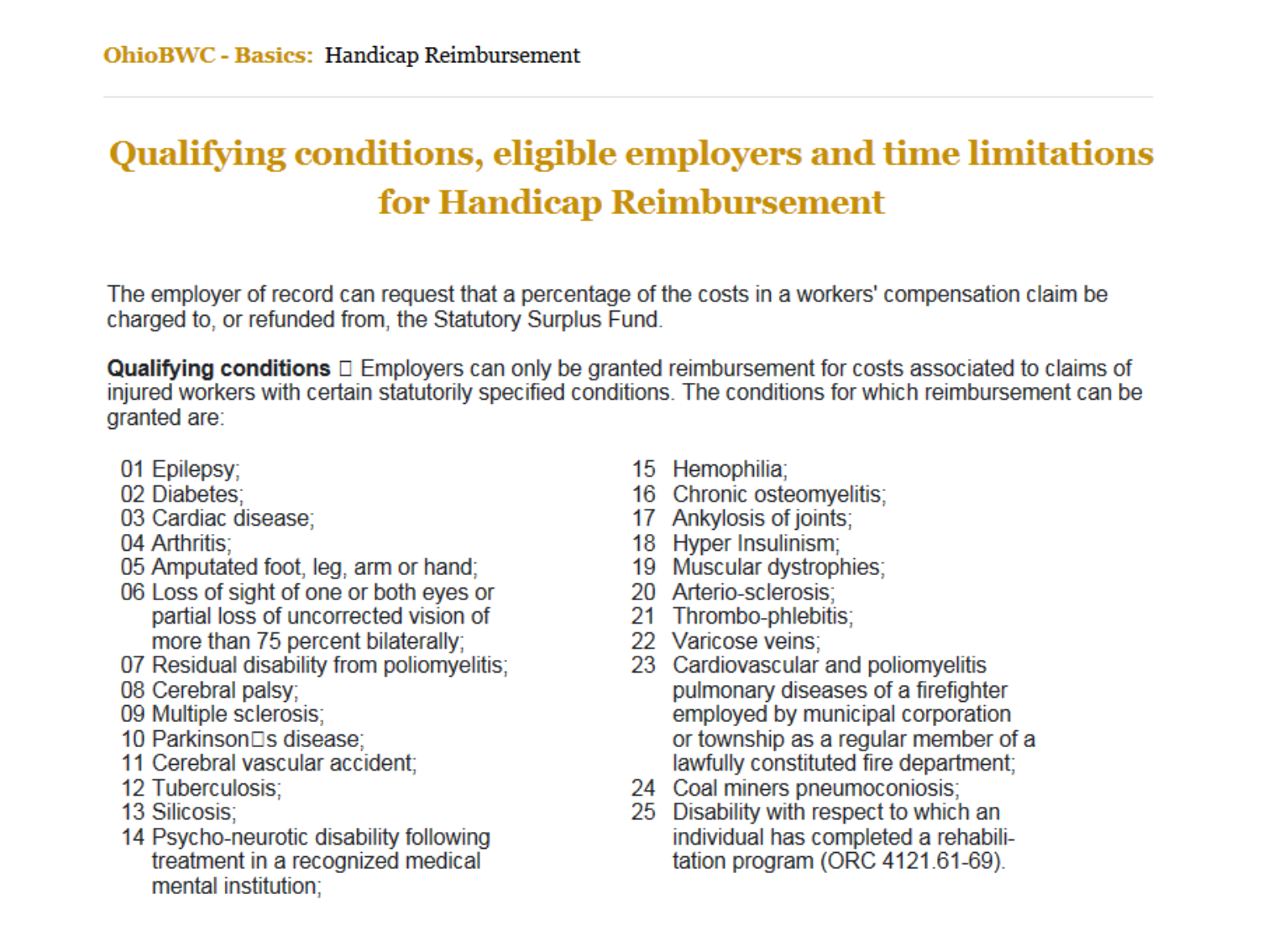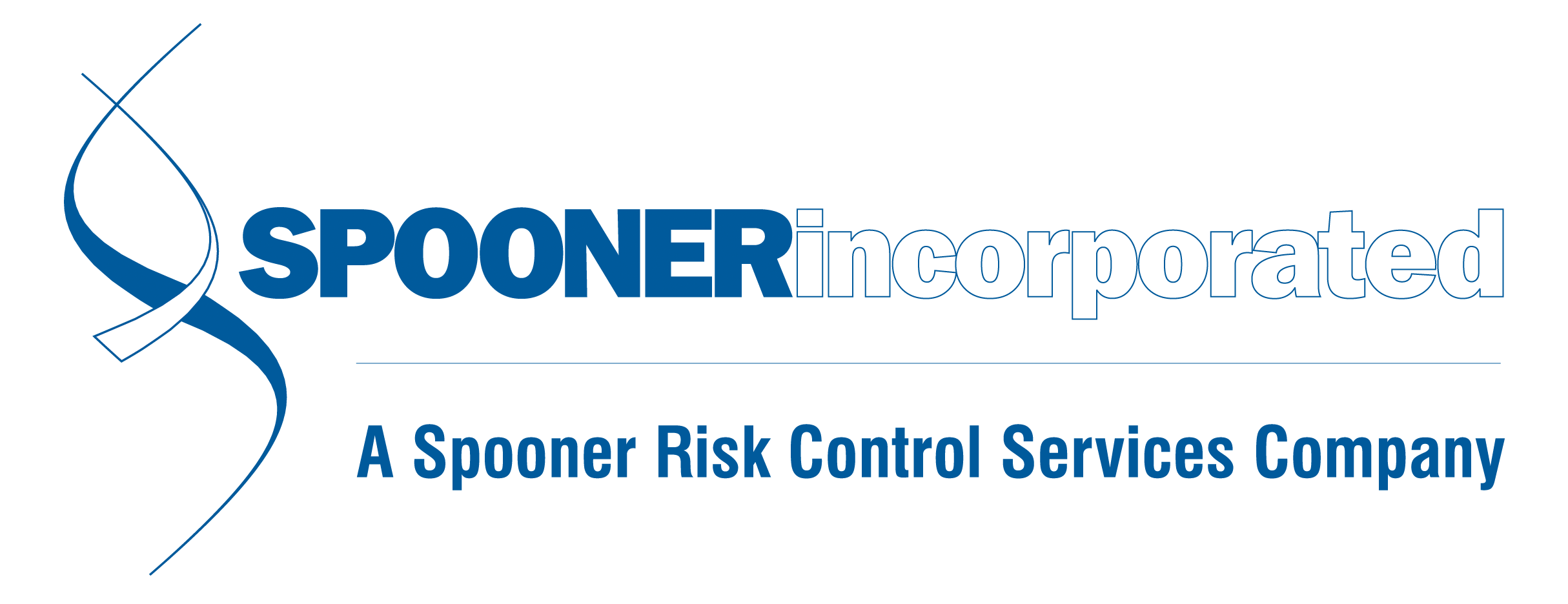What is Handicap Reimbursement and How Can it Save My Company Money on Workers Comp?
The Ohio Bureau of Workers’ Compensation (BWC) provides employers relief on their workers’ compensation premium if an injured worker has a pre-existing condition that delays their recovery following a work-related injury. The key is having an experienced company like Spooner managing the process to ensure that handicap reimbursements are identified and secured within the BWC required time frames.

The list above are the 25 pre-existing physical conditions the BWC will recognize. The top four, epilepsy, diabetes, cardiac disease, and arthritis are generally the most common ones.
How Do I Receive This Reimbursement?
In regards to handicaps and how an employer would go out and get this reimbursement, this really falls into the hands of the third-party administrator (TPA) who should evaluate every lost time claim for a handicap reimbursement.
The TPA should collect the medical evidence such as a list of pre-existing physical conditions and then get a file review from a doctor or a medical expert. After this, there is an informal hearing with the BWC’s legal operations and they'll file for that and have that hearing and then present the information with the BWC.
The Importance of a Third Party Administrator
The third-party administrator is going to be handling this and making sure all the documentation and everything is there because you do need a lot of documentation to make sure you get that reimbursement. From our experience, we have seen that most TPA's are not structured like Spooner to identify and ensure the highest possible handicap reimbursement. In fact, we've taken over for several other TPAs and identified missed handicap reimbursements as well as reimbursements that were never secured and are not outside of the window of opportunity for relief. Those TPAs left money on the table that could have been yours if they only did the work. We’ve got a handicap reimbursement team dedicated to identify and securing handicaps so this doesn’t happen for our clients.
This reimbursement is a huge benefit to the employer and something they could be missing out and if they don't know it's available.
Get Your Reimbursement
Contact Spooner today for a no-cost, no-obligation review to help identify any potential handicap reimbursements as well as a full review to identify ALL available avenues for saving on your workers’ comp related costs.


